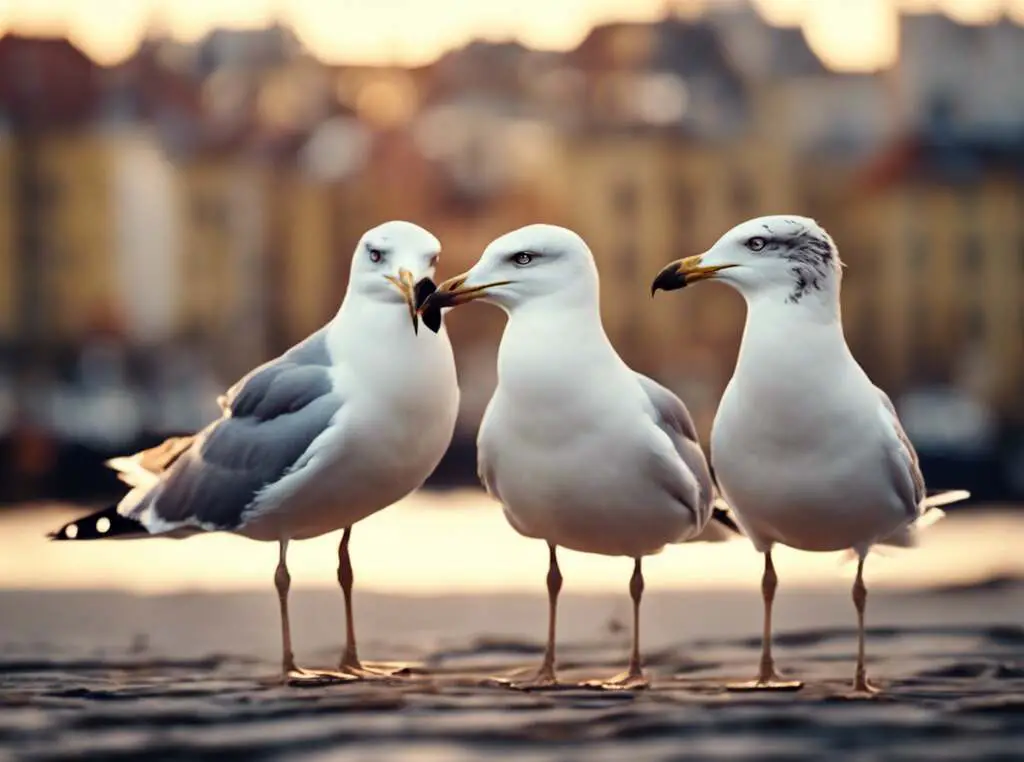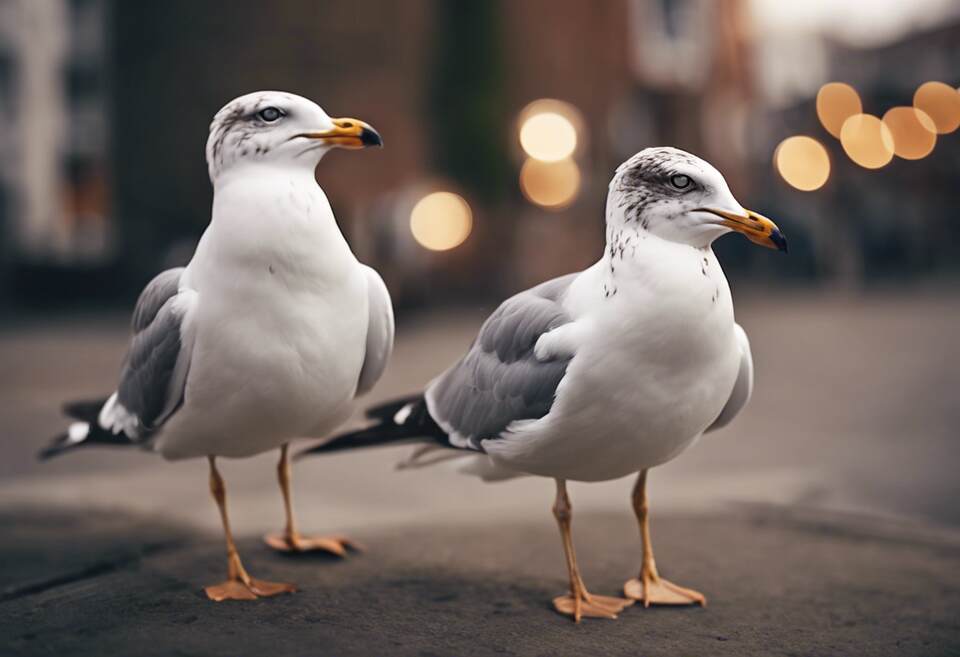Seagulls, known for their distinctive appearance and coastal presence, are fascinating creatures that captivate many with their behavior and lifestyle. One of the intriguing aspects of seagulls is their mating habits. The question that often arises is, do seagulls mate for life? Let’s dive into this topic to gain a better understanding of the mating behavior of these coastal birds.
Table of Contents
Do Seagulls Mate for Life?
Mating Behavior of Seagulls
Seagulls are known to form strong pair bonds with their mates. While not all species of gulls mate for life, many do exhibit monogamous behavior during the breeding season. In these cases, a male and female seagull will come together, often performing elaborate courtship rituals to attract and bond with each other.
Monogamous Relationships
Certain species of seagulls, such as the Herring Gull and the Great Black-backed Gull, are known to form monogamous relationships. These pairs will stay together for the breeding season, sharing responsibilities such as building nests, incubating eggs, and caring for their young. The bonds formed between these seagulls can last for the duration of the breeding season and sometimes extend to multiple seasons.
Lifelong Partnerships
While some seagull species exhibit monogamous behavior for a specific period, there are instances where seagulls form lifelong partnerships. The Western Gull is an example of a species known to mate for life. Once a pair bond is established, these seagulls remain together throughout the year, not just during the breeding season. They work together to raise their offspring and continue to support each other in various activities.
Factors Influencing Mating Behavior
Several factors influence the mating behavior of seagulls. Environmental conditions, food availability, and breeding success play significant roles in determining the strength and duration of pair bonds. Seagulls are adaptable creatures and can adjust their mating habits based on these external factors.
Courtship and Pair Bonding
Seagulls engage in elaborate courtship rituals to attract and solidify their bond with a potential mate. These rituals often involve displays of affection, vocalizations, and aerial acrobatics. By actively participating in these courtship behaviors, seagulls strengthen their pair bond and establish a foundation for their relationship.
The Significance of Pair Bonds
Pair bonds in seagulls serve various purposes, including enhancing reproductive success, providing stability during the breeding season, and sharing parental responsibilities. By forming strong pair bonds, seagulls increase their chances of successfully raising offspring and contributing to the long-term survival of their species.
While not all seagull species mate for life, many exhibit monogamous behavior during the breeding season. The formation of pair bonds plays a crucial role in the lives of seagulls, influencing their reproductive success and overall social structure. Understanding the mating behavior of seagulls provides valuable insights into the complexity of their relationships and the importance of strong pair bonds in their coastal communities.
Social Behaviors of Seagulls in Their Natural Habitat
Seagulls, commonly found along coastlines worldwide, exhibit fascinating social behaviors in their natural habitat. These birds are known for their unique characteristics and interactions within their colonies. Understanding the social dynamics of seagulls provides insights into their behavior and relationships with one another.
Social Structure and Interactions
Seagulls are highly social birds that often form large colonies, particularly during the breeding season. Within these colonies, they establish complex social structures. While seagulls are not known to mate for life, they do form strong pair bonds during the breeding season. Mating pairs work together to build nests, incubate eggs, and raise their young.
Courtship and Pair Bonding
During the courtship display, male seagulls will engage in various behaviors to attract a mate. This may include vocalizations, aerial displays, and offering gifts of food to the female. Once a pair bond is formed, the male and female seagull will work together to defend their nesting territory and raise their chicks. While seagulls do not have a lifelong mate, they are monogamous within the breeding season.
Communication and Hierarchies
Communication is essential in seagull colonies to establish dominance hierarchies and coordinate various activities such as foraging and predator avoidance. Seagulls use a combination of vocalizations, body postures, and displays to convey messages to other members of the colony. Dominant individuals within the group often have priority access to resources and mates.
Cooperative Breeding
In some seagull species, cooperative breeding may occur, where non-breeding individuals help raise the offspring of the dominant pair. These helpers assist in defending the nest, feeding the chicks, and providing overall care. Cooperative breeding can increase the reproductive success of the dominant pair and strengthen social bonds within the colony.
Aggression and Territoriality
Seagulls can display aggressive behaviors, especially during the breeding season when competition for mates and nesting sites is high. Interactions between individuals may involve threats, vocalizations, and physical displays to establish dominance. Territoriality is crucial for seagulls to protect their nests and ensure the survival of their offspring.
The social behaviors of seagulls in their natural habitat are intricate and dynamic. While they do not mate for life, seagulls form strong pair bonds and cooperate within their colonies to ensure the success of their breeding efforts. Understanding the social dynamics of seagulls sheds light on the complexities of avian behavior and the importance of social interactions in their survival.
Conclusion
Seagulls, known for their distinctive cries and graceful flights along coastlines, are fascinating creatures when it comes to mating and social behaviors in their natural habitat. The question of whether seagulls mate for life has intrigued many, and while they do not strictly adhere to lifelong monogamy, their relationships exhibit a strong sense of commitment within the framework of their social structure. Understanding the complexities of seagull mating rituals sheds light on the intriguing dynamics of these birds in their natural environment.
In the world of seagulls, it is essential to discern the nuances of their social behaviors to appreciate their interactions fully. Seagulls are highly social birds that congregate in large groups called colonies. Within these colonies, they exhibit a range of behaviors that serve to establish hierarchies, communicate with one another, and form bonds that are critical for their survival and reproduction.
Despite not forming lifelong monogamous partnerships, seagulls do display a degree of loyalty and commitment to their mates during the breeding season. Mating pairs engage in elaborate courtship rituals that involve displays of affection and intricate aerial maneuvers. While these bonds may not last a lifetime, they are crucial for successfully raising offspring in a competitive environment where resources are limited.
In their natural habitat, seagulls exhibit a remarkable adaptability to a wide range of environments, from coastal shorelines to inland lakes and urban settings. Their ability to thrive in diverse habitats is a testament to their resourcefulness and intelligence. Seagulls are opportunistic feeders that will scavenge for food in various settings, making use of their keen sense of sight and agile flight to catch prey or forage for scraps.
Observing seagulls in their natural habitat offers a glimpse into the complex social dynamics that govern their interactions. From intricate courtship rituals to aggressive territorial displays, these birds engage in a wide array of behaviors that serve to establish and maintain their place within the colony. While they may not mate for life in the traditional sense, seagulls form strong bonds that contribute to the cohesion of their social groups.
The question of whether seagulls mate for life reveals a fascinating insight into the social behaviors of these birds in their natural habitat. While not adhering to strict monogamy, seagulls form intricate relationships that are essential for their survival and reproductive success. By delving into the complexities of seagull mating rituals and social dynamics, we gain a deeper appreciation for these intelligent and adaptable creatures that grace our coastal skies.



